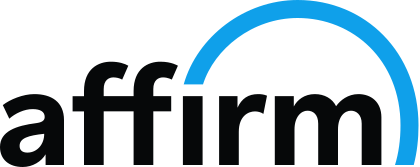C ongratulations are in order! 🎉
ongratulations are in order! 🎉
After putting that stellar resume into action, you received numerous interviews, followed by offers, and the eventual acceptance of the ideal job. The job search has officially ended, right?
WRONG!
Much like a nuclear reactor or even your laptop, your job search needs to be shut down properly. We don’t simply walk away from the War Room Table after accepting the new job. We need to put some things into place that will facilitate expeditious future career movement.
Job Search Shutdown Activity #1:Let others interested know you have accepted a position
If your job search was executed properly, you reached out to a lot of hiring authorities. And if your resume was written by The Resume Clinic, you got a lot of requests for interviews and multiple job offers. 😉 Yes, you have accepted the gem of the offers, but these other interested parties represent potential future employment options, or at the very least, excellent cogs in your network machine.
Once you have accepted that shiny new role, immediately let those others interested your services know you have accepted another position. Pen an email that thanks them for their interest and valuable time and communicate your decision. If appropriate or does not cast their organization in a bad light, share the reasoning behind your decision. But most importantly, state your willingness to stay in touch, and that there may be an opportunity to work together in the future. Always seek to leave the door cracked on that relationship, which leads to the next task …
Job Search Shutdown Activity #2: Connect on LinkedIn With Those Who Sought to Hire You
Any and every individual who showed interest in potentially hiring you should become a LinkedIn connection. While some believe LinkedIn to be nothing but a Facebook for professionals, the truth is that the platform is what you make of it. 95% of recruiters are on LinkedIn and 6 people are hired thought LinkedIn every minute. It is a veritable goldmine of professional opportunity. If you use it correctly.
Since you have already impressed these hiring authorities with your fabulous resume and excellent interviewing skills, you are already vetted. The key now is to stay “top of mind” and continue to build your professional brand to increase your capital with these people, as well as with others who may view your interactions on the platform.
Make it a point to schedule activity on your feed. Post/repost and commend on articles regarding your expertise. Engage on the feeds of others who have done so and provide thought-provoking insights. Your connections will be able to see this, and it helps establish you as someone who is a thought leader in your field.
👉🏼 You know, the type of professional someone may want to hire should they become available again.
In actuality, making these connections should have begun the second those hiring authorities and recruiters showed interest. But it is better late than never to make those connections and grow your network with hot leads that you already know can lead to future opportunities.
(And let’s face it, who says that job you just accepted will even work out?)
Job Search Shutdown Activity #3: Schedule Check-ins With Those Contacts
This could actually be a subset of item #2, but I felt it was important to give it its own section because it is the turbo fuel of this strategy. As great as you may believe you were during the process, it won’t help hiring managers remember you after you’ve accepted that other job. Eventually, they will forget about you. And while they connected on LinkedIn, who is to say that the LinkedIn algorithm will show them your posts and interactions? Better yet, who says they are on the platform enough to even see it if it does?
It is up to you to stay “top of mind” with your potential career Sherpas. Use your calendar to check in with them via email or the LinkedIn messaging portal every few months. Ask about that situation you folks discussed during the interview and whether they ever resolved it. Let them know about new skills you have acquired. The idea here is to stay in their periphery in case you ever need to start the search again. Don’t depend on memory, schedule these “reach-outs” in your calendar and be very deliberate about its execution. This is the long game when it comes to career management, and can be the difference between starting the next career search fresh and taking a while, or immediately falling into a new role with no time lapse in between. It may even mean finding out about an even better opportunity down the line without even looking.


















